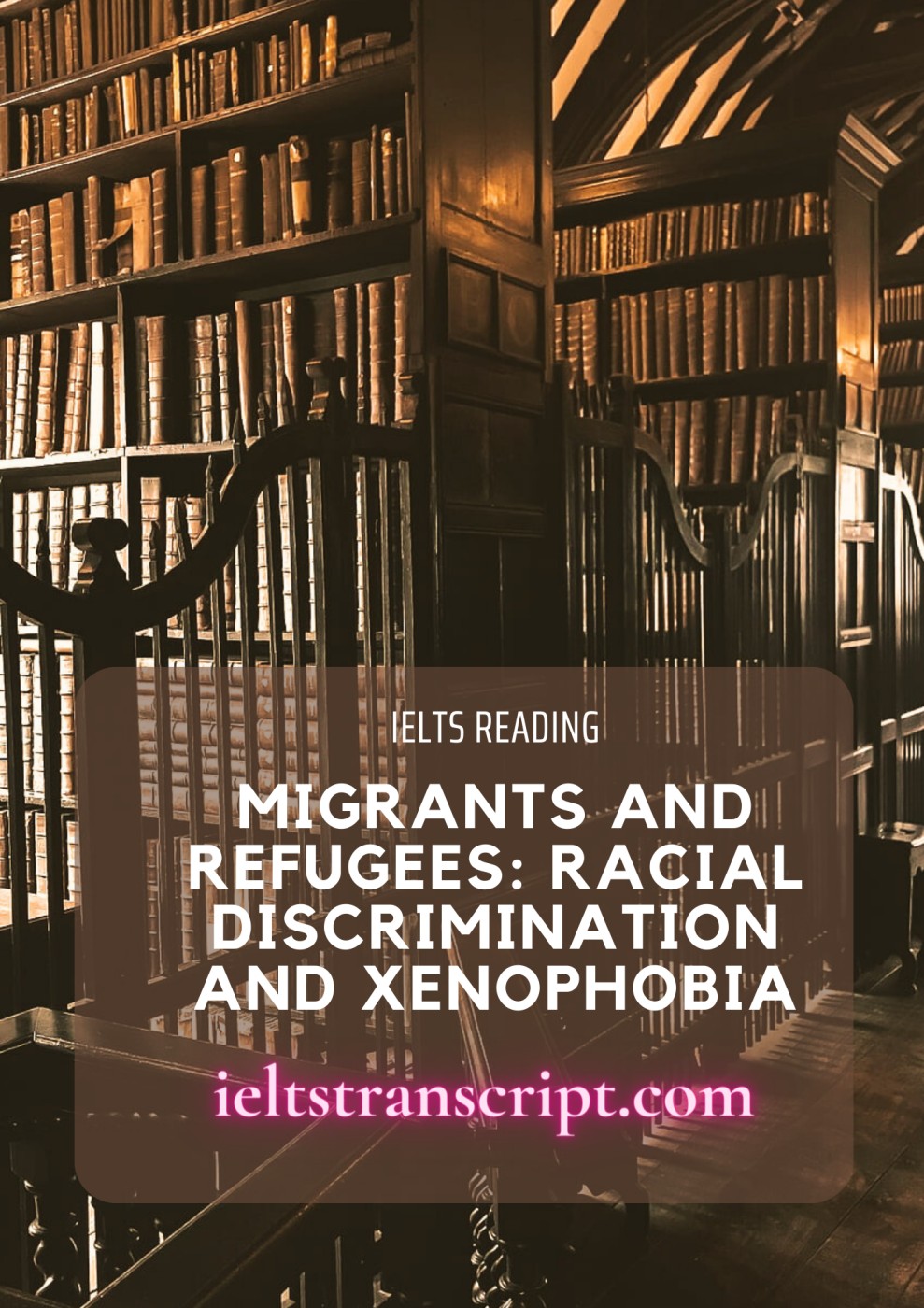- Đối với sản phẩm có giá: Sau khi chúng tôi ghi nhận thông tin đã thanh toán sản phẩm của bạn, sản phẩm sẽ được mở khóa và bạn có thể xem trực tiếp và tải tài liệu sản phẩm.
- Đối với thành viên trả phí: Bạn có thể mua và thanh toán sản phẩm với giá 0đ để tải tài liệu sản phẩm.
- Bạn có thể liên hệ với chúng tôi để được hỗ trợ mở khóa sản phẩm sớm nhất.
Migrants and Refugees: Racial Discrimination and Xenophobia
- Chúng tôi chấp nhận các phương thức thanh toán sau đây: Thẻ tín dụng, thẻ ghi nợ, PayPal, chuyển khoản ngân hàng và tiền mặt.
Chúng tôi sẽ không thu thêm phí cho bất kỳ hình thức thanh toán nào.
- Nếu bạn gặp vấn đề về sản phẩm của chúng tôi trong thời gian sử dụng, vui lòng liên hệ với chúng tôi để được hỗ trợ xử lý sớm nhất nhé.
Xem trước mẫu
Migrants and Refugees: Racial Discrimination and Xenophobia
Today, one in every 50 human beings is a migrant worker, a refugee or asylum seeker, or an immigrant living in a foreign country. Current estimates by the United Nations and the International Organisation for Migration indicate that some 150 million people live temporarily or permanently outside their countries of origin (2.5% of the world population). Many of these, 80-97 million, are estimated to be migrant workers with members of their families. Another 12 million are refugees outside their country of origin. These figures do not include the estimated 20 million Internally Displaced Persons forcibly displaced within their own country, nor the tens of millions more of internal migrants, mainly rural to urban, in countries around the world.
Increasing ethnic and racial diversity of societies is the inevitable consequence of migration. Increasing migration means that a growing number of states have become or are becoming more multi-ethnic, and are confronted with the challenge of accommodating peoples of different cultures, races, religions and languages. Addressing the reality of increased diversity means finding political, legal, social and economic mechanisms to ensure mutual respect and to mediate relations across differences. But xenophobia and racism have become manifest in some societies which have received substantial numbers of immigrants, as workers or as asylum-seekers. In those countries the migrants have become the targets in internal disputes about national identity. In the last few decades, the emergence of new nation states has often been accompanied by ethnic exclusion.
As governments grapple with the new realities of their multi-ethnic societies, there has been a marked increase in discrimination and violence directed against migrants, refugees and other non-nationals by extremist groups in many parts of the world. The lack of any systematic documentation or research over time makes it unclear whether there is a real increase in the level of abuse or in the level of exposure and reporting. Unfortunately, there is more than enough anecdotal evidence to show that violations of the human rights of migrants, refugees and other non-nationals are so generalised, widespread and commonplace that they are a defining feature of international migration today.
The extent of racial discrimination and xenophobia is often played down and sometimes denied by authorities. Racial discrimination is defined in international law as being: any distinction, exclusion, restriction or preference based on race, colour, descent or national or ethnic origin which has the purpose or effect of nullifying or impairing the recognition, enjoyment or exercise, on an equal footing, of human rights and fundamental freedoms in the political, economic, social, cultural or any other field of public life.
Racism and xenophobia are distinct phenomena, although they often overlap. While racism generally implies distinction based on difference in physical characteristics, such as skin colour, hair type, facial features, etc, xenophobia denotes behaviour specifically based on the perception that ‘the other’ is foreign to or originates from outside the community or nation. By the standard dictionary definition, xenophobia is the intense dislike or fear of strangers or people from other countries. As a sociologist puts it, ‘xenophobia is an attitudinal orientation of hostility against non-natives in a given population.’
The definition of xenophobia, and its differentiation from racism and racial discrimination, is a still-evolving concept. One of the regional Preparatory Meetings for a recent World Conference suggested that:
– Racism is an ideological construct that assigns a certain race and/or ethnic group, to a position of power over others on the basis of physical and cultural attributes, as well as economic wealth, involving hierarchical relations where the superior race exercises
...Để xem được đầy đủ nội dung và tải dữ liệu, bạn phải trở thành thành viên của chúng tôi và trả phí cho tài liệu (nếu có)











